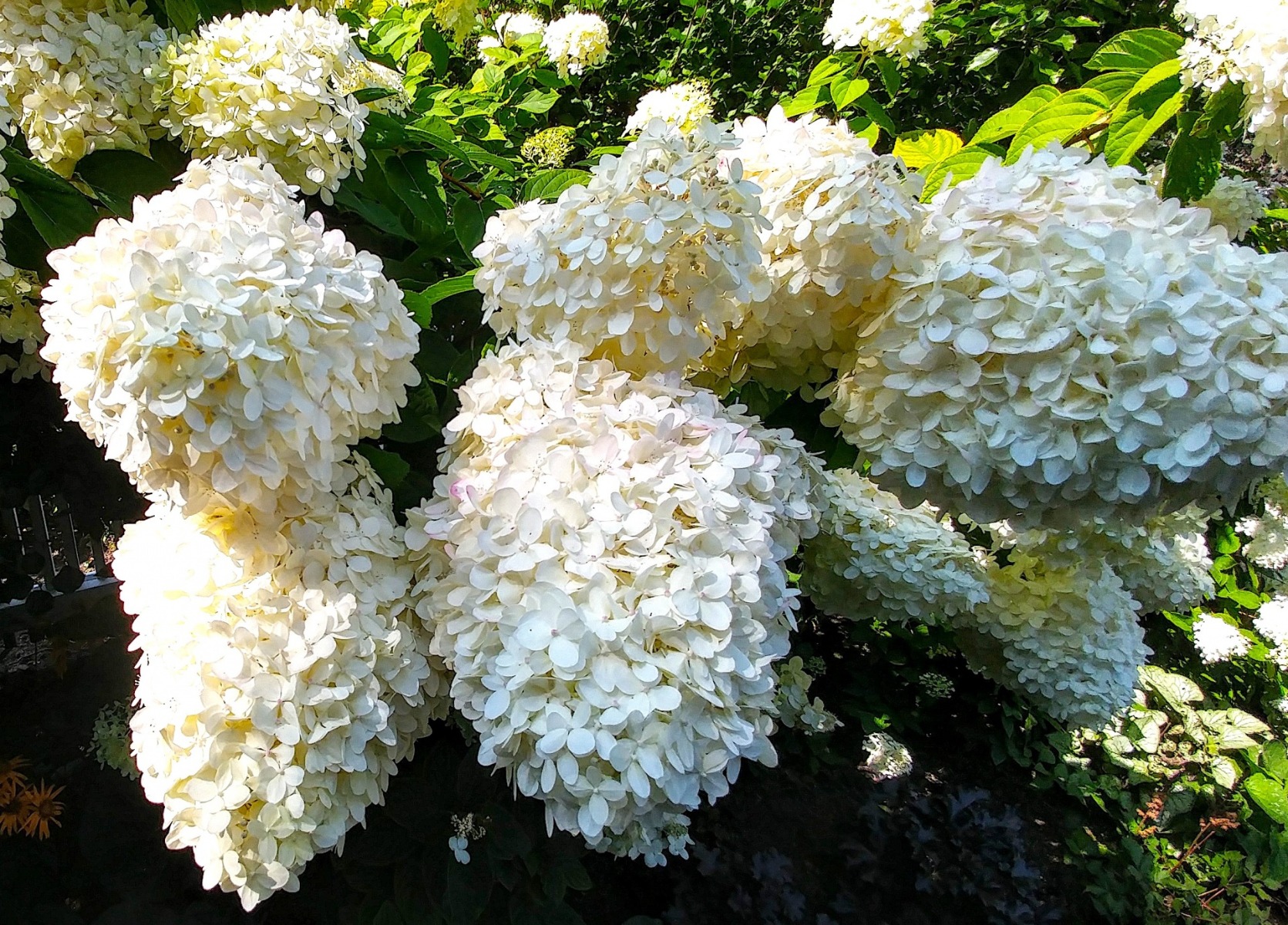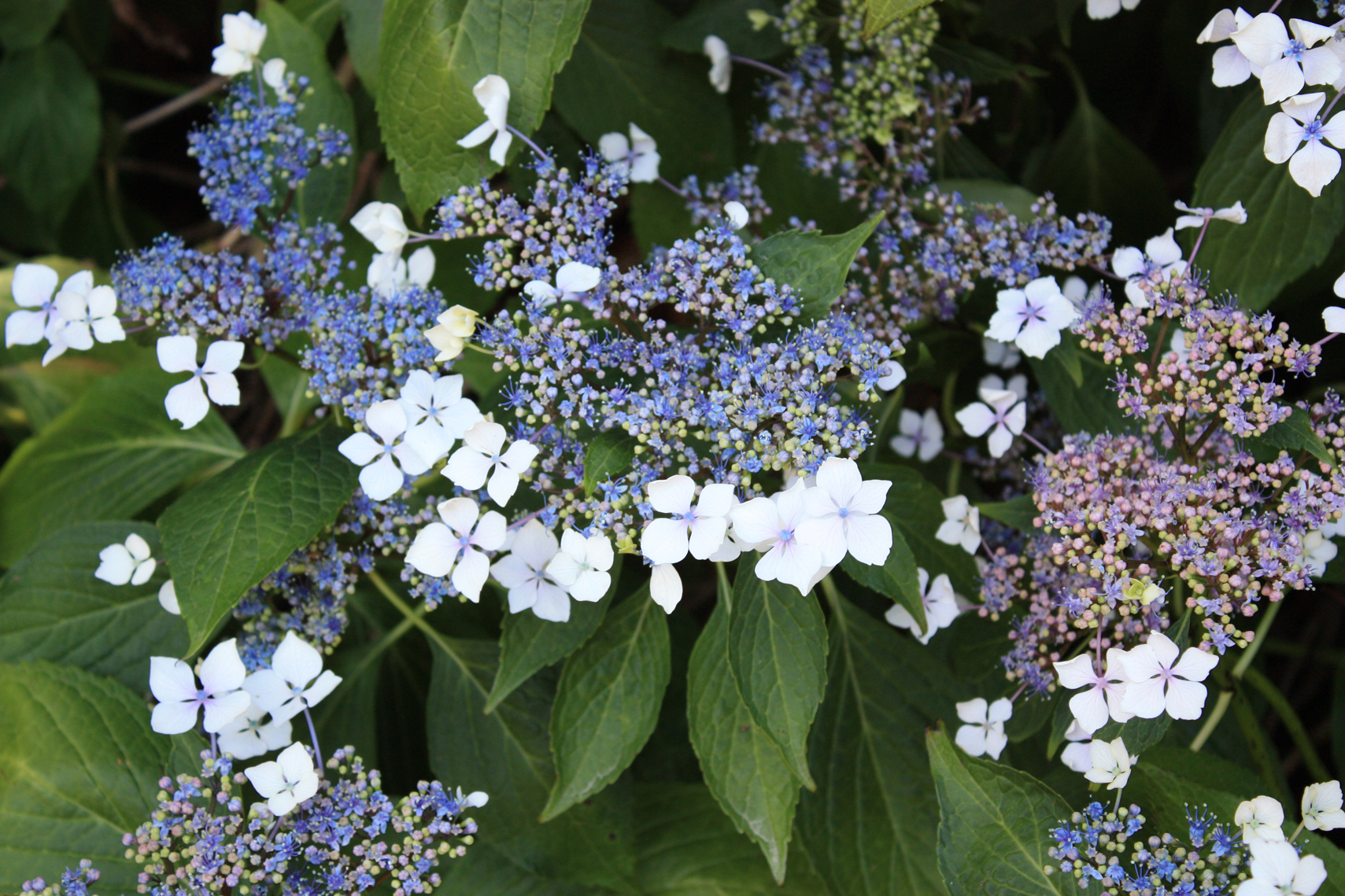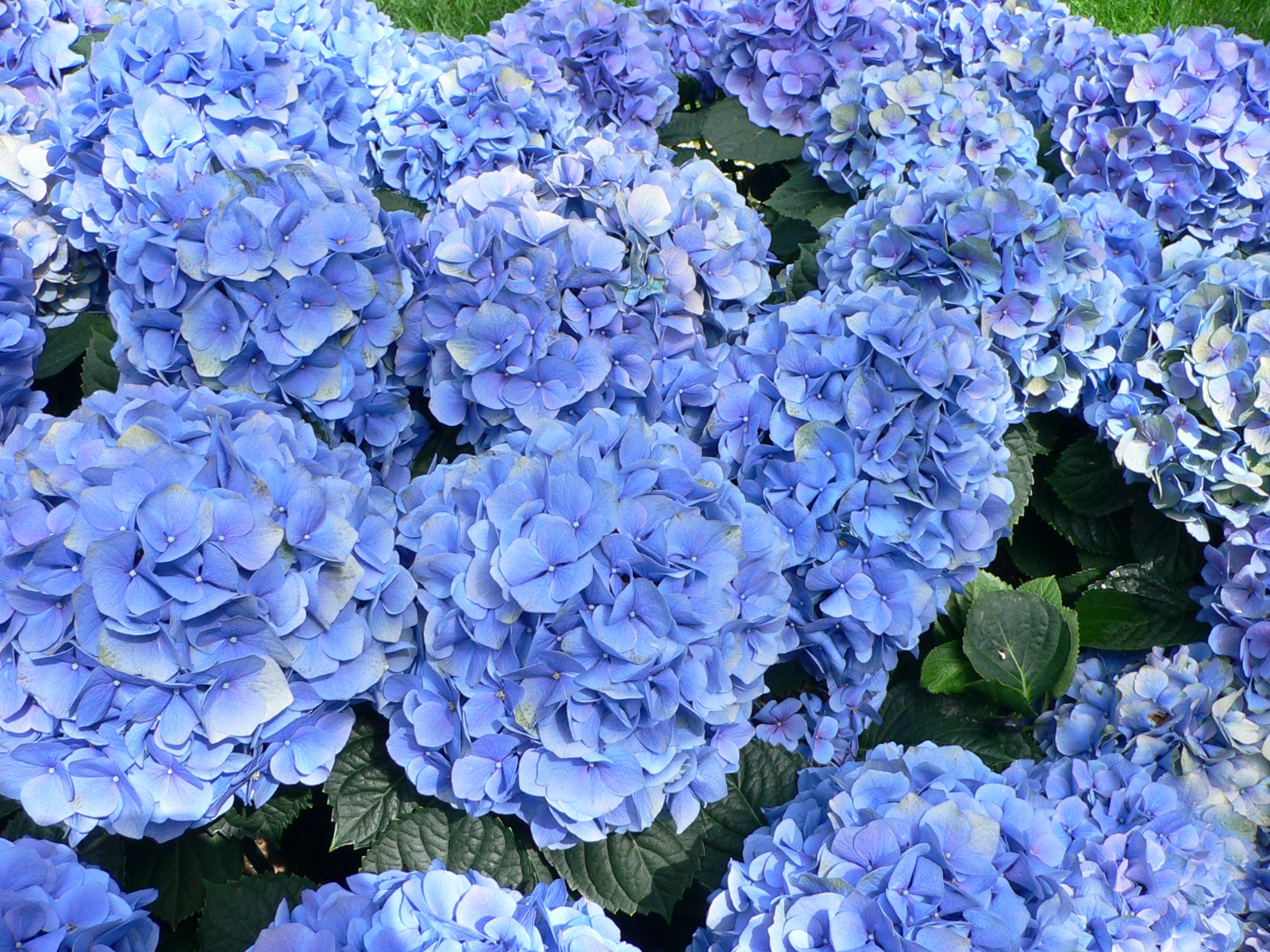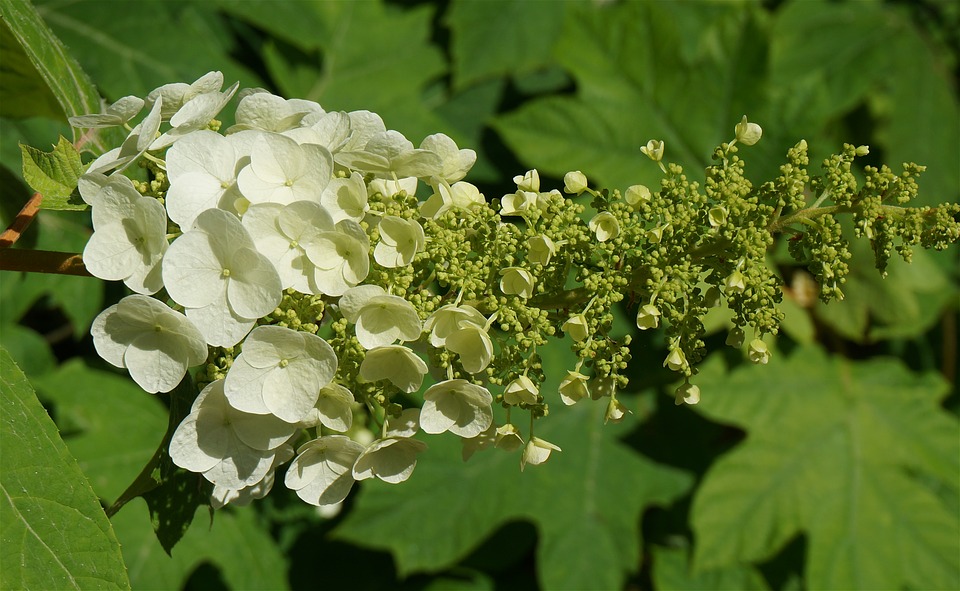Smooth Hydrangeas
Hydrangea arborescens, also known as Smooth Hydrangea, are known for their reliable blooms. These hydrangeas bloom on “new wood”—the current season’s growth. You should prune them back in late winter or early spring. Pruning them back will encourage new growth, which helps the plant to produces flowers. Spring pruning will also result in a stronger fuller plant that is less likely to flop over under the weight of its abundant summer flowers. Cutting the stems back to one or two feet will leave a good framework to support the blooms.
There are two new Hydrangea arborescens ‘Annabelle’ which have stronger stems that won’t flop. They are:
- Hydrangea arborescens ‘Invincibelle Spirit II’ which is the very first pink-flowering form of ‘Annabelle’. It produces new pink flowers right up to frost.
- Hydrangea arborescens ‘Incrediball’ has the biggest flowers and has the strongest stems of any of the ‘Annabelle’ varieties.

Panicle Hydrangeas
Hydrangea paniculata, also known as Panicle Hydrangea also blooms on “new wood”. Prune these flowering hydrangeas in late winter or early spring.
Some varieties that fall into this group are:
- Hydrangea paniculata ‘Bobo’
- Hydrangea paniculata ‘Limelight’
- Hydrangea paniculata ‘Little Lime’
- Hydrangea paniculata ‘Little Lamb’
- Hydrangea paniculata ‘Pinky Winky’
- Hydrangea paniculata ‘Strawberry Sundae’
- Hydrangea paniculata ‘Quick Fire’
- Hydrangea paniculata ‘Little Quick Fire’
- Hydrangea paniculata ‘Zinfin Doll’

Bigleaf Hydrangeas
Hydrangea macrophylla, also known as Bigleaf Hydrangea, blooms on old wood. This plant requires little more than a trimming and only immediately after flowering. You should never prune it in winter or spring, because it sets flower buds the year before and if you shear it back, then you will cut off all of summer’s flowers.
Some varieties that fall into this group are:
- Hydrangea macrophylla ‘Blushing Bride’
- Hydrangea macrophylla ‘Twist and Shout’
- Hydrangea macrophylla ‘Bloomstruck’
- Hydrangea macrophylla ‘Masja’
- Hydrangea macrophylla ‘ Star Grazer’
- Hydrangea macrophylla ‘Wedding Gown’
There are a few varieties in this group that do bloom on old and new wood. They are:
- Hydrangea macrophylla ‘Bailmer’
- Hydrangea macrophylla ‘Everlasting Revolution’

Oakleaf Hydrangeas
Hydrangea quercifolia, also known as Oakleaf Hydrangea, blooms on old wood. Do not prune and they should be protected in the winter. Remove only the spent flowers, and dead or damaged wood.
Some varieties that fall into this group are:
- Hydrangea quercifolia ‘Oakleaf’
- Hydrangea quercifolia ‘Ruby Slippers’
- Hydrangea quercifolia ‘Munchkin’

Climbing Hydrangeas
Hydrangea anomala petiolaris, also known as Climbing Hydrangea, blooms on old wood. Do not prune. Remove only the spent flowers, and dead or damaged wood.
All Hydrangeas require moist but well drained soil. They do not like wet locations. Most Hydrangeas require at least four hours of sun (preferably morning sun) for best flower production. The Panicle hydrangeas are the most sun tolerant. They need plenty of water, especially in new plantings. Hydrangeas dry out quickly in the summer heat due to their shallow roots system. A layer of mulch two to three inches deep will help hold moisture for your hydrangeas. Hydrangeas will quickly tell you when they are desperate for watering. Water them in these cases and they will recover quickly.
Fortunately, even if you make a mistake and prune at the wrong time of year, these plants will forgive you. You may not have flowers for a season but, with proper timing, you’ll see them the following year. Just remember to start by correctly identifying which kind of hydrangea you have. With just a little work, you’ll get beautiful flowers from your hydrangeas year after year.





